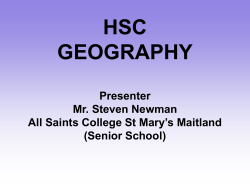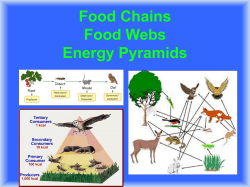
EU DESIGN INNOVATION ECOSYSTEM
DESIGN POLICY MONITOR 2015 // 8 DESIGN POLICY MONITOR 2015 // 9 DESIGN POLICY MONITOR 2015 nn Design users The SEE Design Policy Monitor presents a snapshot of the provisions for design support, promotion, centres and policy in the 28 EUMS based on a survey as well as reflections on future trends in design policies and programmes based on the findings from the 26 Design Policy Workshops. Through a survey with national design representatives, we provide an overview of the state of explicit and tacit design policies. In 2014, 15 EUMS had design explicitly included in national policy, 12 countries had design support programmes in operation, all EU MS have design promotion activities and design centres exist in 18 countries. It is the European Commission’s ambition that by 2020 design should be a well-recognised component of innovation policy at EU, national and regional levels2. To accelerate the up-take of design in innovation policies and programmes, the SEE partners hosted 26 Design Policy Workshops using design methods to explore the Design Innovation Ecosystems in various countries and regions. This section presents current and future trends for Europe’s Design Innovation Ecosystem based on insight from those workshops. nn Design actors nn Design support nn Design sector PRIVATE SECTOR nn Companies using design strategically: Austria 9%, Denmark 23%, Estonia 7%, France 15%, Ireland 15% & Sweden 22%. SECTOR SUPPORT nn Professional Standards for Design (BE, EE, UK). PUBLIC SECTOR nn National government investment in design: Denmark 0,0016% of GDP, Estonia 0,0199%, Finland 0,0032% & UK 0,0006%. nn Design education SEE PLATFORM USE RS T OR PRO DI N G P O LI C Y & G OV T AC POLICY nn Design policies in Denmark, Estonia, Finland, France & Latvia. nn Design in innovation policies (15 EUMS in 2014). nn Smart Specialisations Strategies (9 regions in 2014). nn Action Plan for Design-driven Innovation (European Commission, 2013) nn Innovation Union (EC, 2010) nn Ecodesign Directive (EC, 2009) GOVERNMENT nn MindLab (DK), Experio (SE), Government Digital Service & Cabinet Office Policy Lab (UK) nn European Commission Interservice Group for Design nn European Design Leadership Board MENTORING & SUBSIDY SUPPORT (PRIVATE SECTOR) nn 12 programmes in 2014: ReDesign (AT, HU), SME Wallet (Flanders, BE), Design for Competitiveness (CZ), Design Boost (DK), Design Bulldozer (EE), Design Feelings (FI), Design Innovation Tax Credits (FR), Extraversion (EL), Design Business Profit (PL), Design Leadership (UK). MENTORING SUPPORT (PUBLIC SECTOR) nn Design of Public Services (EE), Public Services by Design (UK) & Supporting Public Sector Innovation in European Regions (Flanders, Northern France, Western Ireland & Wales). INITIATIVES nn Design weeks, festivals, exhibitions, campaigns, museums, trade missions, conferences, awards, social media & publications (28 EUMS have design promotion activities). nn ICSID World Design Capitals (Turin 2008, Helsinki 2012) nn UNESCO Cities of Design (Bilbao, Dundee, Helsinki, Turin in 2014) nn ERRIN Design Days nn Design for Europe (European Design Innovation Platform) & European Design Innovation Initiative AWARDS nn Red Dot Award, iF (International Forum Design) Design Award, Design Management Europe Award, Index Award, European Design Award & James Dyson Award. RS FU NATIONAL FUNDING nn Tax credits & innovation vouchers. ERS EU DESIGN INNOVATION ECOSYSTEM N EU FUNDING nn Horizon 2020, European Regional Development Fund, European Social Fund, Euro Research Council. nn € Design – Measuring Design Value (European Commission) nn IDeALL – Integrating Design for All in Living Labs (EC) nn EHDM – European House of Design Management (EC) nn SEE Platform – Sharing Experience Europe – Policy Innovation Design (EC) nn DeEP – Design in European Policies (EC) nn REDI – When Regions support Entrepreneurs and Designers to Innovate (EC) nn Design for Europe – European Design Innovation Platform (EC) nn SPIDER – Supporting Public Service Innovation using Design in European Regions (INTERREG IVB) nn PROUD - People Researchers Organizations Using Design for co-creation and innovation (INTERREG IVB) nn DAA – Design-led Innovations for Active Ageing (INTERREG IVC) IGN PP KNOWLEDGE EXCHANGE nn Knowledge transfer partnerships between academia and Industry S DE SU RESEARCH nn CUMULUS – International Association of Universities and Colleges of Art, Design & Media nn Design Research Network nn Design Research Society nn UK Arts and Humanities Research Council (In 2014, 11 design for innovation research projects at €620,000). H Despite the unique and diverse actors and initiatives in operation in the various countries, there were remarkable synergies between the strengths and weaknesses of the Design Innovation Ecosystems and the policy proposals. Countries with competitive design performance tend to have multiple initiatives in operation as part of their Design Innovation Ecosystems in order to strike a balance between supply and demand. From the 26 Design Policy Workshops we have also been able to construct a map of some of the stakeholders and initiatives operating in the European Design Innovation Ecosystem (figure 1). All in all, Europe has a dynamic European Design Innovation Ecosystem; however, there are also opportunities to make the ecosystem more coherent and integrated (table 3). For example, to drive demand for design, EUMS can integrate design into innovation mentoring, tax credit and subsidy programmes, train innovation specialists in design methods and adopt design methods for public sector innovation. To enhance the supply of design expertise, governments can finance design trade missions, reinvigorate the design curriculum in schools, establish multidisciplinary courses in universities, establish academia-industry collaboration programmes and encourage continuous professional development for designers. Nevertheless, the lack of quantitative and qualitative evidence of the performance of the Design Innovation Ecosystems across Europe is proving a barrier to integrating design into policy. N nn Design policy CA TIO nn Design funding HIGHER EDUCATION INSTITUTIONS nn In 2014, 38 top design schools in EUMS including 9 in Italy, 5 in France, 4 in Netherlands, 3 in Denmark, Portugal, Sweden & the UK, 2 in Germany & Spain, 1 in Belgium, Czech Republic, Finland & Slovenia. nn In 2014, 20,000 students at top 38 design schools. nn CUMULUS – International Association of Universities and Colleges of Art, Design & Media EDU nn Design research M O TIO N nn Design promotion EU DESIGN SECTOR nn Approx. 410,000 professionally-trained designers in Europe, generating an annual turnover of €36 billion (EU Design Action Plan, 2013). nn Design Industry Insights (UK, 2005, 2010, 2015) RESEARC Design-driven innovation ecosystems or ‘Design Innovation Ecosystems’ is a policy construct developed, tested and validated by the SEE Platform to develop design-driven innovation policy. By transferring establish theory on innovation ecosystems to design, design stakeholders can map their Design Innovation Ecosystems to tackle the gaps and capitalise on the strengths. Finland was the first country, in 1992, to use the concept of innovation ecosystems3 to inform innovation policy and in 2013, they were the first country to use the concept of a design ecosystem to inform their design policy4. The SEE network has used the Design Innovation Ecosystem framework in 26 Design Policy Workshops over three years. Both the inclusive method involving multiple stakeholders (policy-makers, designers, companies, academics and third sector organisations) as well as the Design Innovation Ecosystems framework has proved constructive with policy-makers. Design can be a difficult concept to grasp for government officials but by involving policy-makers in using design methods they benefit from a hands-on experience. The workshops focused on three exercises: 1) mapping design stakeholders and initiatives in the Design Innovation Ecosystem; 2) identifying the strengths and weaknesses and 3) jointly developing policy proposals to tackle the weaknesses and build on the strengths. The nine components of the Design Innovation Ecosystem are: Figure 1: Mapping stakeholders and initiatives in the European Design Innovation Ecosystem O CENTRES nn In 2014, 18 EUMS had a design centre NETWORKS nn BEDA – Bureau of European Design Associations (46 members in 2014) nn SND – Service Design Network nn ERRIN – European Regional Research & Innovation Network n ICSID – International Council of Societies of Industrial Design (153 in 2014 globally) nn CUMULUS – International Association of Universities and Colleges of Art, Design & Media nn ICO-D – International Council of Design nn DME – Design Management Europe nn EIDD – Design for All Europe nn ENEC – European Network of Ecodesign Centres nn ECIA – European Creative Industries Alliance nn UEAPME – European Association of Craft, Small and Medium-sized Enterprise SEE PLATFORM
© Copyright 2025


















